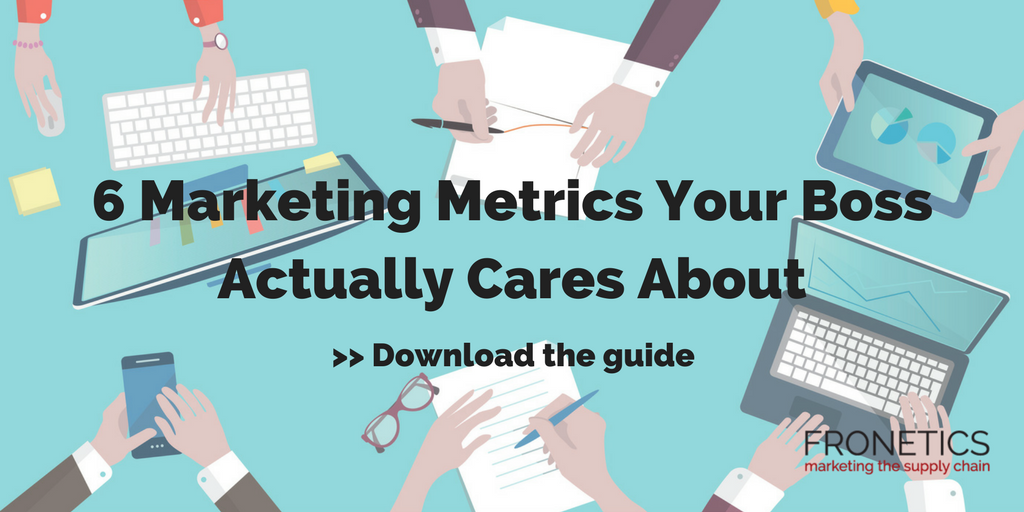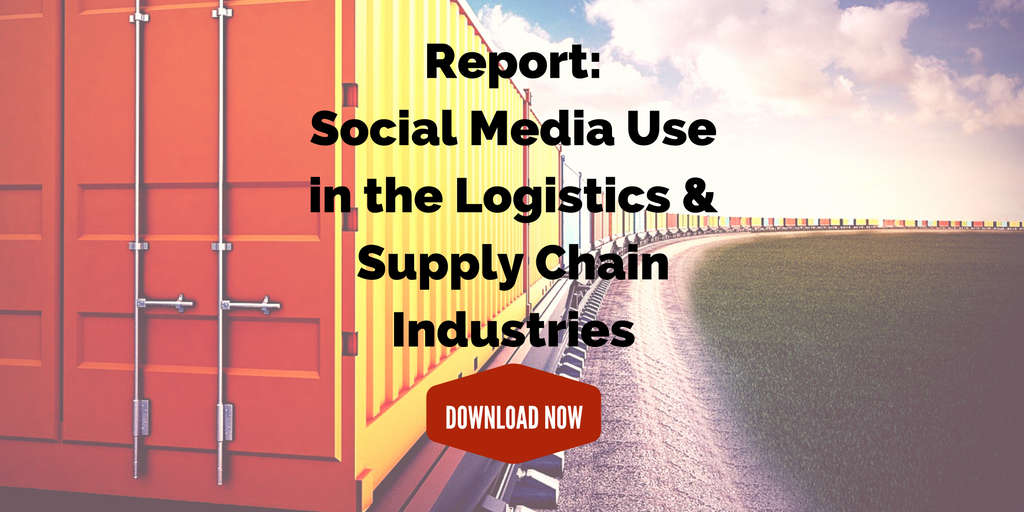
by Fronetics | Jun 6, 2017 | Blog, Content Marketing, Marketing
If you’re committing these content marketing don’ts, you could be turning off clients and prospects instead of attracting them.
As a marketer, your job is to attract customers and prospects — so the last thing you want to do is misfire and scare people away. Yet, only a third of content marketers rate their content marketing strategy as extremely or very effective. You want — and need — to be a voice that steers a company through our ever-changing times. But even with the best intentions, you might be approaching your customers with the wrong tone, and that can cost you.
We’ve got just the plan to make sure your content is in check with what customers want. Here is our list of content marketing don’ts — our top four offenders that scare away customers.
4 content marketing don’ts
1) Don’t be generic.
Understand your audience and what makes them click. Clients want to feel special and understood in a subtle way. If a message isn’t personable and personalized, you run the risk of running customers off and disengaging them.
Create content that is audience-focused, honing in on what your audience wants to read, not what you want to tell them. Do your research and position your content marketing strategy to focus on customer and prospect needs, not yours.
2) Don’t try to sell, sell, sell.
Trying to pass your sales pitch off as content will only hurt your content marketing efforts. Readers view content that isn’t sincere, informative, or authentic as disingenuous, and they’ll quickly turn away.
The same goes for content that’s filled with excessive keywords and multiple links meant to boost SEO results. Everything should be done in moderation so the customer — and search engines — aren’t turned off.
Don’t expect your content marketing strategy to result immediately in increased dollars. Building rapport takes time with an often-delayed payout.
3) Don’t sacrifice quality.
If your content is shoddy and low quality, your clients and prospects won’t bother with it. By and large, your customers value quality, consuming content that offers value and is relevant to their lines of business.
Rather than multiple low-quality postings, stellar content that stands out and teaches readers something will go a long way. And adding a variety of media (e.g., photos, videos, slides) to posts contributes to their value and boosts credibility. Including a well-done graphic or pulling out an especially relevant quote from an expert makes each piece of content pop.
4) Don’t go unplanned.
Ensure your content is relevant by documenting a strategy, following it, and adjusting it as needed. An editorial calendar is a great place to start. (See below for a free editorial calendar template!)
Brainstorm ideas for content with colleagues and clients. Document your goals and methods and create a plan for attaining them, giving your marketing plan organizational clarity. Consistency is king — haphazard content marketing won’t get you anywhere.
Related posts:


by Fronetics | Jun 5, 2017 | Blog, Content Marketing, Marketing
Don’t risk ruining your open rates by committing these 5 email subject line crimes.
Email marketers, beware: If you’re tasked with writing compelling emails to capture online customers, the subject line — the headline of your message — is the first and main spot to grab the viewer’s attention. But, while a cleverly written subject can boost open rates and click-throughs, a poorly written one can have the opposite effect.
With this in mind, Grammarly and Movable Ink polled 1,100 readers to find out what inspired them to click open, and what they considered their biggest pet peeves when it comes to email subject lines. The results of the latter might surprise you.
Your email subject line can make or break your open rate, so don’t commit these subject line crimes.
5 common email subject line crimes
1) Spelling and grammatical errors
Proofread, proofread and proofread even more. The top reason 35% of people don’t open email is because of errors in the subject line.
Viewers who see an error in the headline assume that the rest of the email has misinformation, and they immediately disengage with its content. So whether you read the email subject line out loud (and even the rest of the email), ask someone else to read it before you hit send. Or use an online spelling/grammar program to check it for you. Just make sure you don’t have errors in the subject line.
2) Using all capital letters
It’s commonly cyber-accepted that anything typed in all capitals translates into being yelled at, and no one likes that. In fact, 24% of survey respondents said this was their biggest pet peeve when it comes to an email subject line.
Don’t mistakenly assume that hitting caps-lock for your email subject line will demand your reader’s attention — it actually does the opposite, and sends your email straight to the trash folder.
3) Excessive use of punctuation
When the email subject line is filled with exclamation points marks or other unnecessary punctuation, such as ellipses or too many commas, 17% of readers are most annoyed and deterred from looking at the message. You don’t want to be perceived as a spammer, by either the receiver’s filtering program or by the reader, so keep the extraneous punctuation to minimum.
4) Misused or broken personalization
Too often emails go out without proper formatting, or with generic placeholder fields left blank. For example, a reader who opens his or her inbox to a message with the subject line, “Hi, [name],” is sure to ditch the message — and lose any respect for the company who sent it. Make sure your email client and any dynamic content within is firing up correctly by sending a test message to yourself and a colleague.
5) Language that is too promotional
Some email subject lines use language that is over-the-top promotional, and readers don’t like it. Temper your language and don’t write subject lines that are too colloquial or filled with jargon.
What about using emojis in subject lines?
Increasingly, marketers are using emojis in subject lines. If used correctly, they may boost your open rate.
Some 56% of brands using emojis in their email subject lines report a higher unique open rate, according to data from Experian. Use of emojis can shorten your subject line, allowing an easy read on a mobile device. But, beware: Not all emojis are readable to every user, so choose wisely and always send a test first.
What bothers you most when it comes to an email subject line? Are there certain subject crimes that will prevent you from opening a marketing email?
Related posts:

by Fronetics | Jun 1, 2017 | Blog, Content Marketing, Marketing, Strategy
Today’s B2B buyer’s journey involves more research, more internet searches, and more social media.
We’ve said it before: The B2B buying process has changed, and you need to adapt. The vast amount of information available on the internet has afforded buyers a level of self-sufficiency that renders traditional sales models moot. It drives the need for new strategies, like content marketing and social media marketing.
How can supply chain and logistics businesses adjust to the new way of doing things? The latest B2B Buyer’s Survey offers insight into how B2B buyers are finding vendors, engaging with them, and — ultimately — deciding to work with one. Some of the statistics are very telling and give vendors a good idea about where they need to invest their time and money in order to get buyers’ attention
10 stats about the B2B buyer’s journey
1) Length of buying process
The B2B buying process is becoming longer and more complex because the majority of buyers (82%) are using more sources to research and evaluate products and services, and they are spending more time in the research phase itself.
2) Web search is first
62% of B2B buyers say that a web search was one of the first three resources they use to learn about a solution.
3) Online eventually
In fact, in a different study, 94% of buyers reported using online research at some point in the purchasing process.
4) Searching for what?
71% of B2B researchers start with a generic search — rather than searching for a particular company.
5) How many searches?
B2B researchers do an average of 12 searches before engaging with a specific brand’s site.
6) Self-sufficiency on the sales path
Buyers are 57% of the way down the sales path by the time they engage with a brand’s website, meaning they have already spent a fair amount of time educating themselves with the enormous amount of information available to them on the internet.
7) Social media plays a role
And content isn’t limited to your website: A vibrant social media presence helps buyers conduct their research. In fact, more than half (53%) of B2B buyers report turning to social media to make buying decisions.
8) (More than ever)
What’s more, more than a third (34%) say they are spending more time this year than last using social media to research vendors and solutions.
9) LinkedIn is B2B’s network of choice
LinkedIn is reportedly the most impactful to the research process. 81% of respondents said it was very important or somewhat important.
10) But don’t discount video
And, believe it or not, video sites like YouTube and Vimeo are playing an increasingly important role in the B2B buyer’s journey, with 60% of respondents ranking them very important or somewhat important.
Related posts:

by Fronetics | May 31, 2017 | Blog, Content Marketing, Data/Analytics, Marketing, Social Media
Analyzing the right metrics is crucial to determining whether you are achieving content marketing ROI.
We all want to see the fruits of our labors. Whether launching a product or a new social media campaign, we look for instantaneous numbers that will affirm we made the right choices. But here’s the problem: Not all metrics are created equal. Content marketing ROI is harder to confirm than checking a few quick numbers.
A spike in homepage hits may be the result of your marketing efforts, or it may be because of ghost spam. (Or, both.) Regardless, more visits do not necessarily correlate to increased revenue — just more visits. Even so, 83% of B2B enterprise companies (over 1,000 employees) use web traffic as their main metric for measuring content marketing ROI.
The number of email subscribers is another common success metric. But, again, having 100,000 email subscribers means nothing if only 0.001% are opening them. You actually could be losing money in terms of resources allocated if the emails aren’t helping drive sales. That’s why it is crucial to focus on your company’s return on investment (ROI). You could waste hours reviewing a hundred different analytics that tell you nothing about how revenue was affected by a particular effort.
Know where to allocate resources
Lean-startup pioneer Eric Reis said, “The only metrics that entrepreneurs should invest energy in collecting are those that help them make decisions.” In other words, measure the things that will tell you if an effort was profitable so you know where to put your time and money.
ROI can help you determine whether it was worth spending your resources in a particular way. This is extremely useful on platforms like blogs and social media, where things are constantly changing. Using ROI as a litmus test, you can keep experimenting and making sure you’re using these tools effectively.
According to our Social Media Use Report, 81% of respondents wanted a tracking and measuring tool to prove their ROI. Your resources are limited, so it’s crucial to evaluate your efforts with meaningful numbers that illustrate their affect on your bottom line.
So what are they best metrics to use? Here are three of our favorite tools.
3 tools for measuring content marketing ROI
1) Built-in Social Media Analytics Tools
Most social media platforms have their very own built-in tools that give you detailed information about engagement with your content. Even better, most of these tools are free. Twitter Analytics, Facebook Insight, and YouTube Analytics are just a few examples of tools you can use to measure exposure and engagement with your followers. This priceless information will help you gain a better understanding of your followers and the content they are drawn to.
2) Hootsuite
Hootsuite promotes smarter, data-driven social media marketing decisions backed by real-time analytics that allow you to spot trends as they develop and drill down for insights on how your social content is performing. It takes all your top social media platforms (Twitter, Facebook, YouTube, LinkedIn) and combines them into one application for full-scope results.
3) HubSpot
Measuring ROI through HubSpot is both accurate and convenient. HubSpot sends you weekly updates on your campaign performance and allows you to pull any reports of your own. Standard analysis includes: visits, leads, percentage changes, submissions, bounce rate, downloads, and much, much more. HubSpot Marketing Analytics can identify blog articles, landing pages, emails, and social media posts that perform well in terms of specific keywords.
Calculating ROI might take some time — both in the few extra minutes to do the math and the amount of time that needs to pass before all the data is available — but that number will be invaluable to you.
Let us help you get started. We’ve created a monthly marketing reporting template just for you. This template tracks your marketing metrics and generates graphs you can use in reporting and presentations. Click the button below to get the template (an Excel document) now.

Related posts:


by Fronetics | May 25, 2017 | Blog, Content Marketing, Marketing, Social Media
In this month’s social media news, Facebook cracks down on misleading content, while Snapchat and Pinterest appeal to advertisers.
If you sense that the competition between social media networks for users and advertisers is heating up, you’re not alone. This month, Facebook continues its quest to cut down on the sharing of false information and misleading content while launching better lead-tracking tools for ads. Twitter moves to protect user privacy by updating its terms and conditions. And exciting new technology launches at Google, Pinterest, and Snapchat.
Here’s the latest social media news for the supply chain.
Facebook reduces links to low-quality web pages and misleading ads
After months refining its News Feed algorithm and ads, Facebook announced another update to weed out false information and spam in a blog post: “We reviewed hundreds of thousands of web pages linked from Facebook to identify those that contain little substantive content and have a large number of disruptive, shocking or malicious ads. We then used artificial intelligence to understand whether new web pages shared on Facebook have similar characteristics. So if we determine a post might link to these types of low-quality web pages, it may show up lower in people’s feeds and may not be eligible to be an ad. This way people can see fewer misleading posts and more informative posts.”
As changes roll out gradually in the coming months, publishers with high-quality landing page experiences might notice an increase in traffic, while those with negative experiences will see a decline. Businesses looking to improve their web experiences can read the full Facebook Business post and visit the Help Center for tips.
See also:
Twitter updates opt-out process
Twitter is helping users weed out irrelevant personalized ads and protect their privacy. The Twitter website tag will now “rely on the Digital Advertising Alliance’s consumer choice tool and other ways to opt-out described here.” Site owners must update the privacy policy to notify their users of this new opt-out process.
Google unveils Google Lens
Google’s latest product, Google Lens, will leverage computer vision and AI technology to enable smartphone cameras to not only see, but to understand what it’s seeing to help users. For example, if you take a photo of the login information on the sticker on your router, the lens will identify the action by offering to connect you to the Wi-Fi, using the photo of the network name and password.
Snapchat reaches 166 million daily active users, rolls out limitless snaps, adds ad lenses and geofilters
In its first quarterly earnings report since going public in March, Snap Inc. announced that its daily active user (DAUs) base grew to 166 million in Q1 2017. Additionally, the Snapchat app released four new creative tools:
- Infinity timer setting: This option eliminates the 10-second time limit and allows your videos to play as long as you like. The snap then erases when closed.
- Looping: Users can choose to have their photos or videos loop indefinitely until viewers close the snap.
- Magic eraser: Users can select and remove objects from snaps.
- Emoji drawings: Users can now draw with emojis using the pen tool.
Ad partners also have three new creative tools at their disposal:
- World Lenses are an extension on Snapchat’s Sponsored Lens, which already let advertisers turn users’ selfies into ads. Sponsored World Lenses allow advertisers to create content for the rest of the photo beyond the face, like floating 2-D or 3-D objects.
- Audience Lenses let advertisers buy a guaranteed number of Lens impressions for a specific audience. This includes those that are targeted by demographics like age and gender, as well as those identified as falling in one of Snapchat’s Lifestyle categories.
- Smart Geofilters automatically add location information or other real-time information to a nationwide or chain Geofilter. This ad type allows users to activate branded overlays that appear when they swipe left or right on the camera.
Pinterest applies visual search technology to ads
Pinterest announced that it’s now leveraging the technology behind its newly released visual discovery tools — Shop the Look, Instant Ideas and Lens beta — to make Promoted Pins even more effective. Machine learning allows the platform to identify what is most relevant to a user based on the images s/he pins. For example, if the user pins images of blue, formal, A-line dresses, Pinterest will begin to show similar images in that user’s feed. The same technology will now be applied to ad content. “We help people find your ads in the very same way, connecting people to products they like the looks of, but don’t quite have the vocabulary to describe. As a result, your ads feel more relevant, and they can reach audiences you may not have considered before.”
Not sure how to use Pinterest’s advertising tools? Check out these 4 free webinars for businesses.
Facebook enables targeting to users who have saved posts, adds offline conversion solution for lead ads
Facebook page admins can now see the number of saves for each page post, then “create custom audiences of people who have saved [their] posts and retarget them with different content.”
Additionally, Facebook is now allowing businesses to connect their CRM, point of sale, or even their call-center systems to their Facebook ad campaigns to help advertisers monitor which of their lead ads drive those business results. This is huge for advertisers who have been trying to attribute conversions from lead ads based on offline activity.
Ellen, Ludacris, Katy Perry and more to star on YouTube’s exclusive new shows
YouTube announced plans to launch seven new “star-studded” shows, exclusively premiering on the video platform “beginning later this year.” Stars include Kevin Hart, Rhett and Link, Ellen DeGeneres, Katy Perry, the Slow Mo Guys, Demi Lovato, and Ludacris. The shows will be fully ad-supported and thus free to watch.
Facebook releases “Latest Conversations” feature
Facebook’s new Latest Conversations feature shows timely topics that many members across the network are discussing in its search results. It appears in its own section of the search results and includes a running count of how many people are talking about the topic at the moment. This feature is currently only available on the mobile app.
Related posts:


by Fronetics | May 24, 2017 | Blog, Content Marketing, Marketing
Ready to give up on content marketing? Chances are, you haven’t given it a fair shot.
You’re three or maybe even six months into your new content marketing program. Congratulations! You’re probably noticing an uptick in web traffic, social reach, and other engagement metrics like time on page. You’re right on track! But you have no leads or sales to speak of. And whether that’s got you nervous that you’re doing something wrong, or just has your boss breathing down your neck to get some results FAST, I’m here to tell you: Now is NOT the time to give up on content marketing.
In fact, giving up now is just about the worst thing you can do. You’ve already made the majority of the investment without giving your program time to deliver your return.
Why does content marketing take so dang long to work?
Content marketing is a long-term solution that helps businesses build brand awareness, grow their audience, and generate new leads and sales. But it takes time and effort to achieve results. You shouldn’t give up on content marketing before the seeds you sow have time to bear fruit.
Just how long will it take for your content marketing strategy to yield results? Well, that really depends on your business and your goals, but you can count on at least six months. (Joe Pulizzi, founder of the Content Marketing Institute, says more like 18.) The point is, content marketing is not a magic, overnight solution. The reason reflects why content marketing is effective in the first place.
4 reasons why it’s NOT time to give up on content marketing
1) Developing your strategy takes time.
Only 11% of companies without a documented content marketing strategy find their efforts to be successful, compared to 60% of companies with a strategy in place. (That number rises to 86% when the company designates someone to lead the strategy.) The significant increase in effectiveness can be attributed to the careful thought and research that goes into building a strategy.
You will need several months to build the foundation of your content marketing plan if it is to be effective. You need time to research the kind of content that resonates most with your audience and to truly understand the (very specific) demographic that finds value in what your company offers. Then you need time to determine and test which distribution channels will most effectively reach your target audience, to discern a plan for content production, and to build out an editorial calendar reflective of your strategy.
Without getting all of these pieces precisely right, you’ll waste an enormous amount of energy and resources working on an ineffective strategy. Take the time to evaluate the market for your business and its content marketing strategy, and you’ll realize results in time.
2) Becoming an authority takes time.
The goal of your content marketing efforts should be to be a consistent source of information and value to your audience, who gradually will come to trust your authority and reward you with their business when they are ready to make a purchase. And establishing yourself as an expert doesn’t happen overnight.
Consistency is key for two reasons. For one, the average B2B buyer consumes between two to five pieces of content before making a purchase decision. If your content is old, arbitrary, contradictory, or otherwise unreliable, buyers will chose a different vendor whose content is more trustworthy. Consistent and consistently good content keeps your target audience engaged and builds your credibility with them.
Secondly, search engines rank websites based on several factors, and one of the most important is consistency. If your company blogs every other month, compared to companies that post several days a week, your posts will be penalized in search results. And since very few readers click beyond the top five search results, you’re drastically reducing your organic search potential.
As a SumAll article put it, “Whether getting traffic to your blog or your content ranked in the search engines, it doesn’t happen overnight, but instead by repeatedly creating and distributing quality content on a frequent basis for the long-term.”
3) Building your audience takes time.
The B2B buying process is becoming longer and more complex because the majority of buyers (82%) are using more sources to research and evaluate products and services, and they are spending more time in the research phase itself. In fact, 71% of B2B researchers start with a generic search — rather than searching for a particular company — and do an average of 12 searches before even engaging with a specific brand’s site. They are 57% of the way down the sales path by this point, meaning they have already spent a fair amount of time educating themselves with the enormous amount of information available to them on the internet.
This means you need to allow your target audience time to find you and complete thorough research about you and your competitors before you even realize that the lead exists. And likely there will be more time before a sale takes place.
Content marketing is much more about lead nurturing than producing instant results. As you build your reputation as a valuable source of information, you will simultaneously build a loyal following of readers and content consumers who continue to return to you for knowledge and, ultimately, purchases. Relationship-building is not a streamlined process, but it does foster the ever-valuable repeat business that will have a greater impact on your bottom line than a one-and-done sale.
4) Your sales cycle takes time.
Unfortunately, content marketing cannot decrease the length of your sales cycle. Thus, you can’t expect to see the fruits of your labors (in terms of dollars) until at least one cycle is complete.
There should be, however, hints along the way that your efforts are working. Metrics like increased website traffic, email registrations, and social reach offer clues that more potential customers are finding your business in their research. You should take these signs and continually evolve your strategy to accommodate what is working for your business.
Also keep in mind that while content marketing can have an enormous impact on generating and nurturing leads, it does not deliver sales on a silver platter. Sales teams still play a major role in building on those relationships and closing deals.
Please don’t give up on content marketing before it’s had time to play out. You’ll not only lose out on your initial investment, but also all the leads and sales that will eventually come your way once your program has had time to develop fully.
Related posts:












